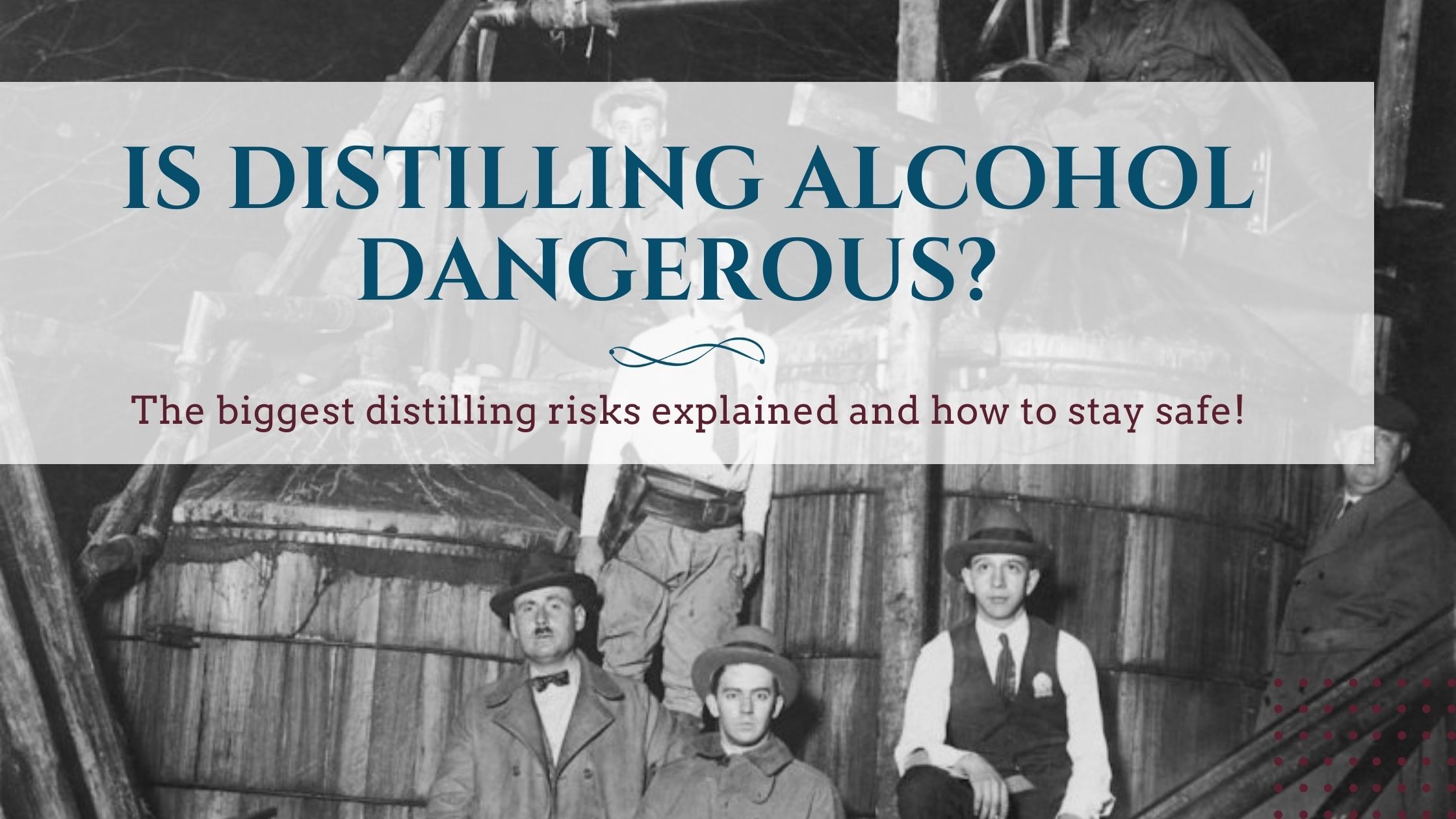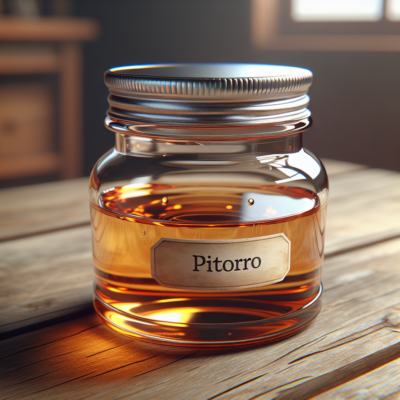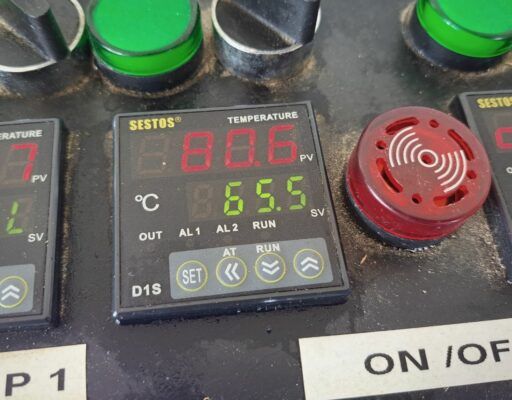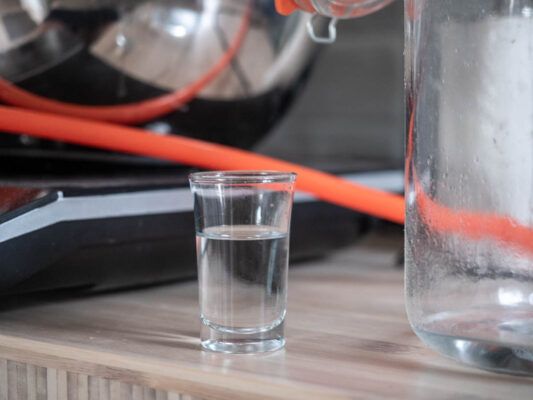Safety
Is Distilling Alcohol At Home Dangerous? (Explained!)
*** Please be advised that it is illegal to distill spirits at home in most countries. This guide is for informational purposes only. To find out if distilling is legal in your country, check out our article: Is Home Distilling Legal In My Country?.***
Distillation is a process for creating hard liquors or ‘sprits’ such as vodka, brandy, and whisky to name just three examples. It dates back to at least the 13th century, and is a simple concept, but requires a lot of knowledge and experience to do it well and safely.
There is concern among some that due to the higher concentration of alcohol, methanol content and other safety risks, you should avoid distilling your own alcohol. In this article, we will be objectively answering the question of is distilling alcohol dangerous?
Table of Contents
How Dangerous Is Distilling Alcohol?
How dangerous distilling alcohol in your own home will depend on two factors; your knowledge level, and also how seriously you take your process.
- If you opt to cut corners, the results can be catastrophic.
- You have to be dedicated to doing it right.
The associated dangers of distilling alcohol are present during the consumption of your final product as well as during the actual distillation process. Often individuals will distill alcohol themselves with the aim of saving money. This leads to a number of possible dangers such as being enticed into keeping some of the ‘heads’ which contain methanol. As well as using cheap low-quality or even DIY distillation set-ups which could pose an electrical or fire hazard.
Why Distillation Is Dangerous? (6 Reasons)
The following 6 dangers are the most common risks associated with making and drinking your own spirits. We’ve also explained how you can mitigate these risks to let you get on with distilling without worry.
1. Methanol Content
Methanol or methanol poisoning is by far the biggest perceived risk when making your own spirits.
Methanol is a type of alcohol used in making fuel, industrial products, and also antifreeze. It’s certainly not safe for humans to consume and can lead to permanent blindness and death by ingesting as little as 10ml.
Methanol can naturally occur during the fermentation process; however, this is typically only prevalent when fermenting leafs and stems. This means it’s very unlikely you’ll produce enough methanol during fermentation to cause harm.
Its a common myth that homebrew
That said, there will always be a small amount of methanol in your ferment/ wash. The next step is to get rid of it carefully during the distillation process. We’ve written an extensive article here on how to make cuts in your final spirit thereby removing the methanol entirely.
You can develop methanol poisoning through inhalation or drinking it. There are various stages to methanol poisoning, even if you are not killed by it, it can still lead to irreversible damage to your body such as blindness as well as damage to your nervous system. Additionally, methanol is highly flammable and explosive in certain types of environments.
We’ve dedicated and entire article to helping you avoid methanol when distilling which you can read here.
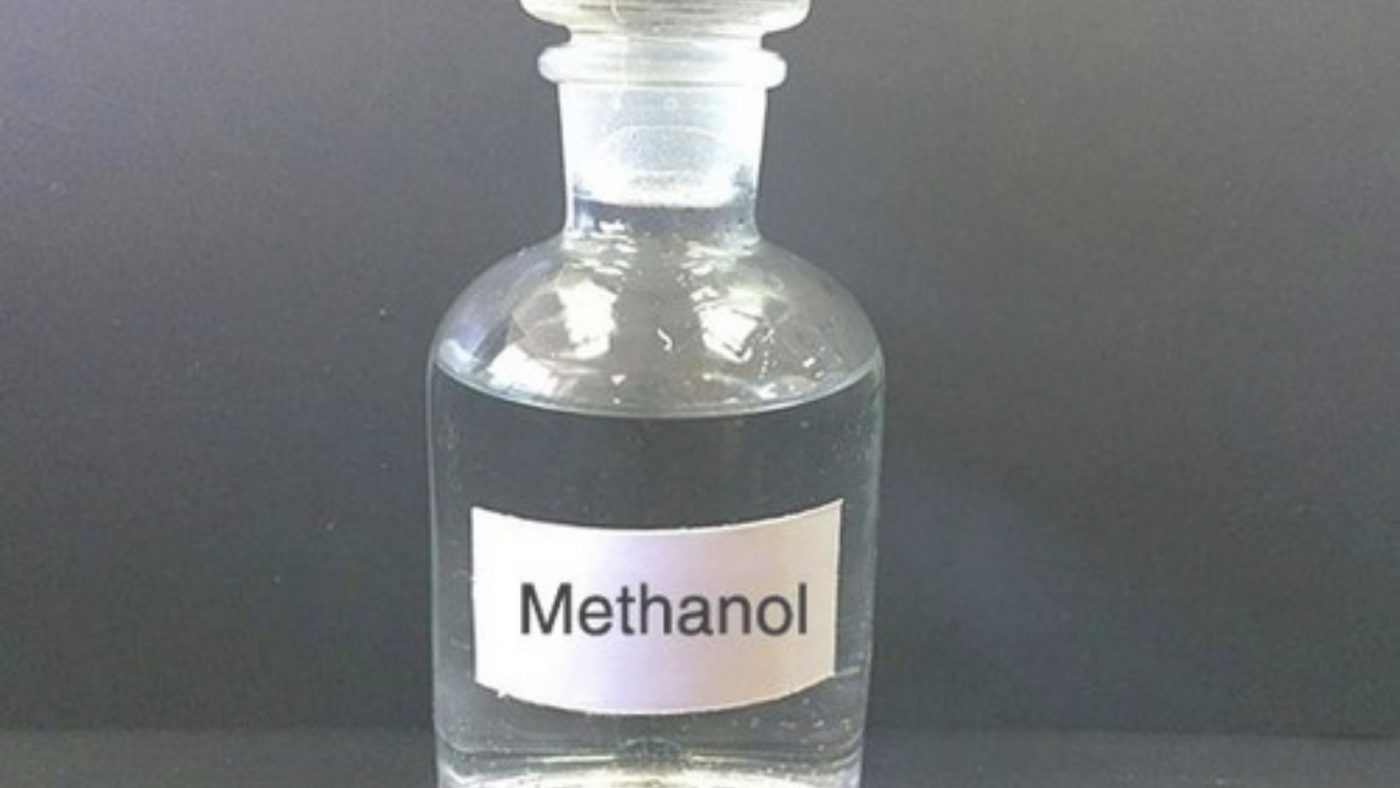
2. Leeching Toxins From Plastic
Ethanol is a powerful solvent and is capable of extracting toxic chemicals if it’s made or stored in non-inert materials.
If you are incorporating plastic into your alcohol distillation process, then you run the risk of introducing dangerous toxins into your final product.
There are many different types of plastics – each with its own dangers. PVC is generally considered the most harmful one. During a distillation process, it can be used as a condenser or another part in the same region of the system.
The best practice is to only use materials that are completely inert to ethanol, such as copper, stainless steel, and glass.
If using plastics is absolutely necessary, then opt to use plastics that do not leach toxins such as Polypropylene or PTFE (Teflon).
3. Legal Issues
Unfortunately, distilling is either illegal or heavily restricted in most parts of the world.
Take the USA for example, where it’s generally accepted that distilling is illegal. This isn’t quite true in reality. Federally in the United States, distilling alcohol is illegal. Yet in some states such as Missouri, Alaska, and Arizona it is legal. Other states distilling is allowed with a license or permit.
This means it important YOU verify the legal status of alcohol distillation for where you live.
In a lot off other countries around the world, you require a license from the government to distill alcohol even if it is just for personal consumption.
Not sure about the legality of distilling in your country? We’ve written this article to help you understand the laws and regulations of distilling in your country.
4. Alcohol Poisoning
It is estimated that in the United States there were over 95,000 deaths last year due to alcohol poisoning according to the Centers for Disease Control and Prevention.
Too many home distillers will skip the step of using an accurate device such as an alcoholmeter in order to measure the alcohol content of their liquor.
This means that they will fail to spot dangerous levels of alcohol or misjudge how much they can safely drink.
Homemade alcohol can come off the still as high as 96% ABV. At that concentration, one pour is the same as 2.5 shots of a standard spirit. It can also cause serious damage to the mouth, throat, and esophagus.
The tricky thing is that there is no minimum level of alcohol that a person needs to drink in order to get alcohol poisoning. It depends on a variety of factors such as the weight of a person, their body size, age, and even gender.
Our Rule: Make sure to carefully measure and label every product that is destined for human consumption with the ABV level.
5. Explosive Risk
An explosion is a rare event, but it is still possible. As a rule of thumb, if the alcohol by volume (ABV) is 56% or over then it will turn highly flammable at room temperature. Although an ethanol-water solution of 40% ABV heated at 26C/79F can also be explosive.
5a. Safety During Storage
Even at low temperatures, alcohol vapors can build up within a container and explosively ignite with a rogue spark.
Be careful when opening sealed containers as venting alcohol vapors are particularly dangerous.
Always store alcohol away from heat sources, ignition sources, and open flames.
5b. Safety During Distillation
Distillation is the most dangerous time for us DIYers as we are dealing with hot alcohol vapors often adjacent to electrics or an open flame.
Leaks:
It is important to pay particular focus to this and do frequent checkups if there are any leaks In your still. You can conduct checkups using a small mirror, any leaking alcohol vapors will condense on the surface of the mirror.
Pressure:
An explosion will occur if pressure builds up and there is a source of ignition. Therefore, it is recommended that you test your distillation set up with water in order to spot any gaps that will cause leakages. The reason why you have to do it with water is that alcohol vapor is much less visible than steam.
NEVER completely seal a distillation column. Pressure will build up and you’ve essentially built yourself a bomb.
Gas vs. Electricity
You can also highly minimize the chances of an explosion during distillation by using a system powered by electricity rather than an open flame. Just make sure that the electrical appliances are working properly and keep in mind that the more appliances there is the higher the more potential ignition sources.
6. Electrical Dangers
Stills combine water and electricity – two things we usually try to avoid putting together.
You need to be extra cautious about where your electrical wires go. If there are any water leaks. And that all your electrical connections stay dry.
This risk of electrocution is real.
Our Rule: Any circuit powering your still MUST be protected by a RCD, RCBO, or GFCI. If you don’t know what these are, then call an electrician before you continue distilling.
Slight leaks of alcohol vapor brandishing around your home are potentially also dangerous. If a large concentration of liquid condenses this increases the possibility of electrical shock much like with water.
Electrical sparks can also ignite stray alcohol vapors so ensure your workspace is well ventilated at all times.

Conclusion
We hope that we were able to adequately answer the question of is distilling alcohol dangerous. As well as highlight to you some of the risks that you should keep in mind. Alcohol distillation is a challenging endeavor that will require a lot of mistakes before you end up mastering the process. There is nothing wrong with making mistakes, however, you have to take note of all of the dangers and be fixated on averting them from happening

